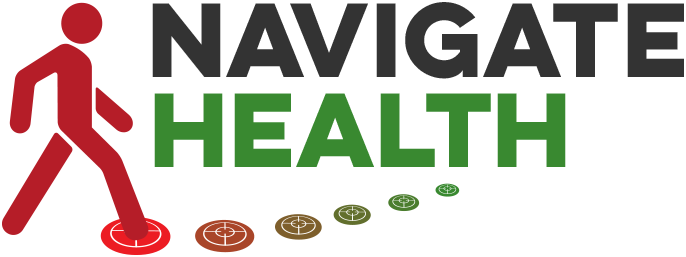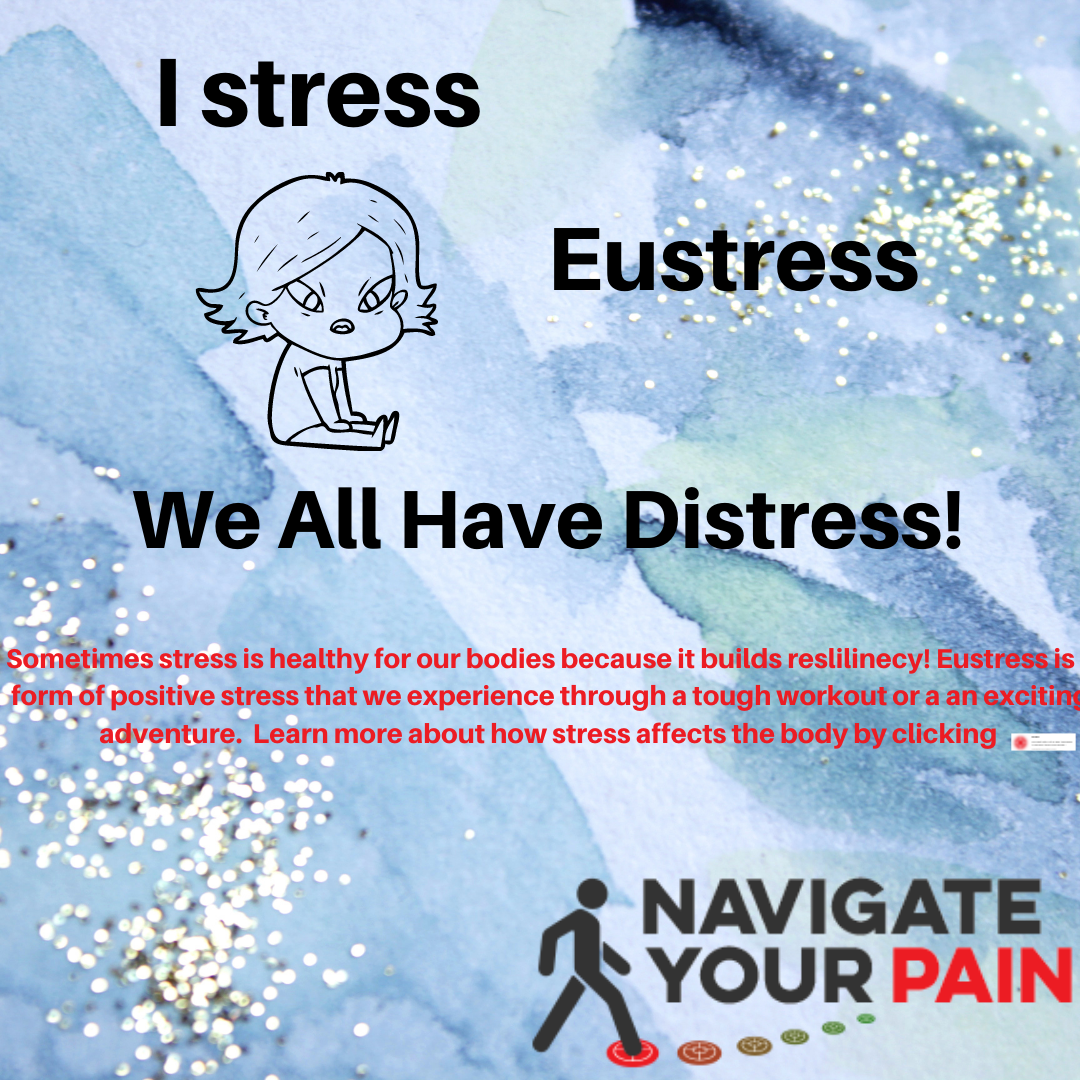Part 1:
The Stress-Pain Relationship
By Megan Doyle, MS, OTR/L, FPS, Cert-APHPT
Occupational Therapist, Fellow of Pain Science, and Certified Applied Prevention Health Promotion Therapist
Just What is “Stress”, Anyway?
Stress is often thought of as a bad thing, when in reality we encounter different types of stress on a daily basis. Stress is a normal response to “stressors,” which do include negative situations like getting stuck in an unexpected traffic jam on the way to work, but also positive situations like going for a run. “Negative” stress responses are referred to as distress, and “positive” stress responses are referred to as eustress (1).
An important concept to understand, however, is that both distress and eustress result in similar responses in the body, or physiological signs and symptoms. The sympathetic nervous system, more commonly known as “fight or flight”, is activated, which releases stress hormones into the bloodstream (1).
This causes our heart and breathing rate to increase, also providing us with more energy in the moment. The bigger difference comes in how we feel mentally when experiencing distress and eustress. With distress, we may feel upset, angry, nervous, or scared, while with eustress we may feel increased motivation, focus, excitement, or a sense of accomplishment.
Our bodies actually need a certain level of stress in our daily lives to make adaptations that allow for our minds and bodies to better respond in the future, such as learning how to respond to work or parenting demands, or the way our heart, lungs and muscles become stronger in response to routine exercise. But what happens when we have far more distress than eustress?
When Stress Becomes Constant
Sometimes, daily stress continues to add up and can even become overwhelming. Some of these stressors can include (1):
- Money issues
- Work-place related stress
- Political climate
- Violence or crime in neighborhoods
- Medical conditions
- Relationship conflicts
- Media overload
With these significant negative stressors, as it becomes more difficult to adapt, we can have multiple issues arise, including (1):
- Sleep difficulties (see our blog post on sleep and overall health here)
- Issues with appetite
- Increased heart rate and blood pressure
- Difficulty with focus, concentration, or memory
- Feeling “jittery” or “on edge” frequently
- Feeling exhausted
- Becoming irritable or frustrated easily
- Having increased symptoms of anxiety
In addition to the above signs and symptoms, the onset of physical pain has also been shown to be connected to on-going stress.
Constant Stress Can Become Constant Pain
Let’s go back to the “fight or flight” response for a moment, as it is key to understanding the basic influence of stress on pain perception. This response was designed to protect us and keep us safe from a threat. If a bear were chasing after you through the woods, and you scraped your arm against a tree branch, feeling pain in your arm would distract you from continuing to run away from the (much more dangerous) bear. So, our bodies are capable of producing the strongest pain killers known to man: our own endorphins! These endorphins are released to keep us from paying attention to the nerve signals coming from the scrape on your arm, due to our brain’s ability to determine whether to produce pain or not in this moment, and you don’t feel pain in your arm. This allows us to focus all of our efforts to get away from the bear. Later, however when we are in a place of safety, our brain will decide it is time to make us pay attention to our scraped arm (or now there could be a risk of infection, etc.) and make us feel pain. Therefore, our bodies were designed to reduce or not even experience pain in the case of an acute stress event (2).
But this adaptive stress response was only meant to occur in short busts (meaning once the danger of the bear goes away, so too does the elevated stress response). Research has shown that prolonged stress however can actually trigger the onset of pain, eventually becoming chronic pain (2).
One recent study (3) looked at the influence of psychological, or mental, stress on the onset of acute low back pain. Participants who had higher levels of stress in their lives when their back pain came on were more likely to have their back pain become chronic, as opposed to those with low levels of stress.
So now that you better understand stress and the role that prolonged stress can plan in the onet of pain, join us in Part 2, where we’ll detail recommended ways to reduce distress and improve your overall quality of life and health!
Part 1 References:
- Shafir, H. Eustress vs Distress: Positive & Negative Types of Stress. Updated on 7 July 2021. Retrieved on 7/18/21 from: https://www.choosingtherapy.com/eustress-vs-distress/
- Lunde CE, Sieberg CB. Walking the Tightrope: A Proposed Model of Chronic Pain and Stress. Front Neurosci. 2020 Mar 26;14:270. doi: 10.3389/fnins.2020.00270. PMID: 32273840; PMCID: PMC7113396. Retrieved on 7/18/21 from: https://www.ncbi.nlm.nih.gov/pmc/articles/PMC7113396/pdf/fnins-14-00270.pdf
- Bernier Carney KM, Guite JW, Young EE, Starkweather AR. Investigating key predictors of persistent low back pain: A focus on psychological stress. Appl Nurs Res. 2021 Apr;58:151406. doi: 10.1016/j.apnr.2021.151406. Epub 2021 Feb 11. PMID: 33745554; PMCID: PMC8132482.



